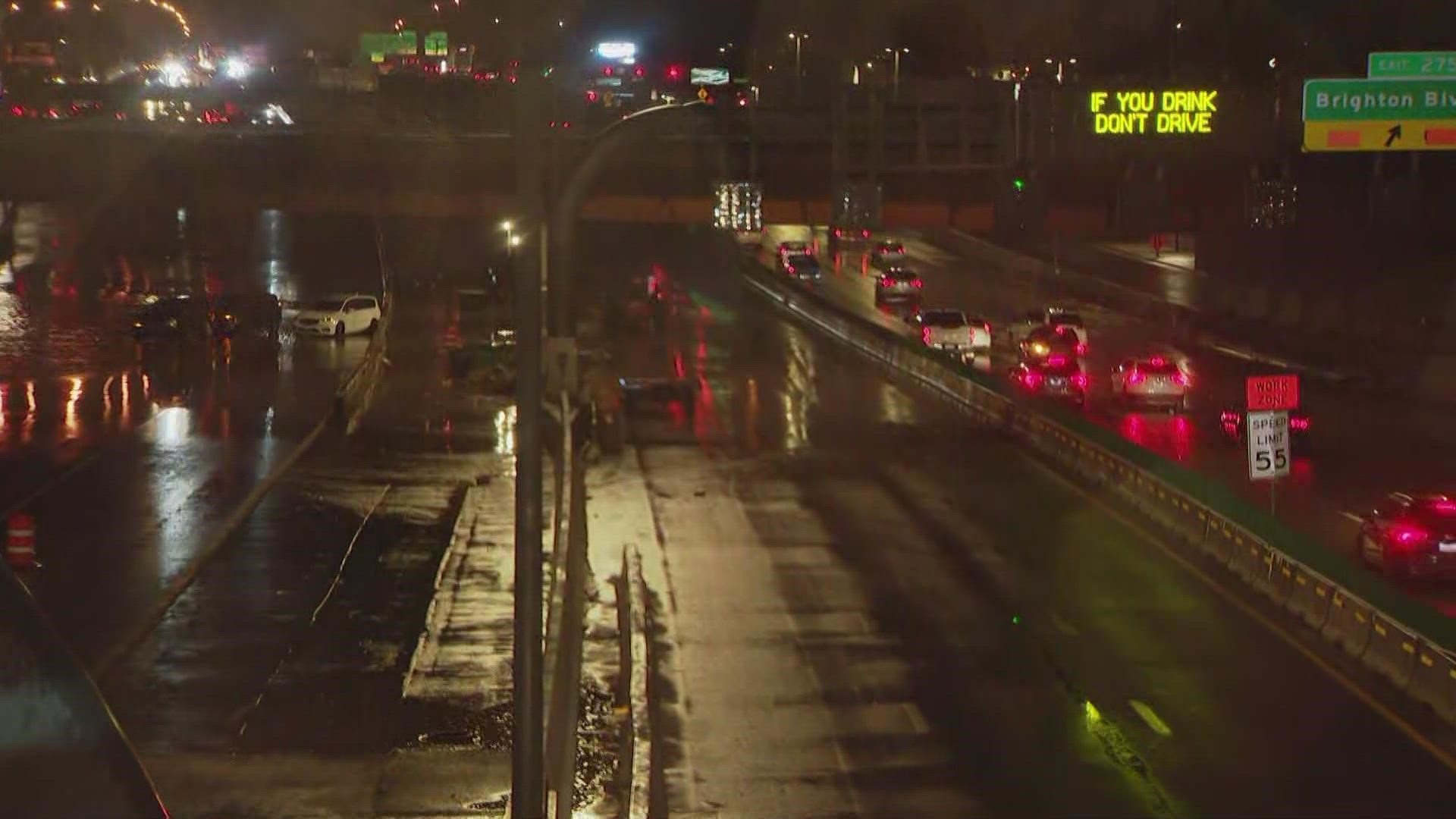DENVER — There is a temporary drainage plan for the newly-opened phase of the Central 70 construction project. Despite what Sunday’s flooding demonstrated, that plan does not include allowing I-70 to become a lake.
The interstate became submerged near York Street when heavy rain moved through Denver, leaving drivers stranded. The Denver Fire Dept. rescued 11 people near that location because of the high water.
The pump station, which is supposed to keep that kind of flooding from happening when the project is complete, is supposed work right now.
According to a statement from the project contractor, Kiewit, "An error in the drainage pump system appears to have prevented the pumps from turning on automatically. Once this was determined Kiewit turned the pumps on manually."
In the same statement, they claimed the drainage system was unfinished and they were working with the Colorado Dept. of Transportation (CDOT) on a solution.
CDOT reiterated what Kiewit said about the system’s incompletion.
According to the 13-page temporary drainage plan, the eastbound side of I-70 is still incomplete, but the westbound side should be working. The westbound roadway and drainage systems are fully constructed and operational.
When the project is complete, the underground part of I-70 is supposed to be able to withstand a 100-year rain event. That's about two inches of rain in a half hour.
The closest measurement we have from Sunday night was taken at the Denver Zoo, which got close to that amount of rain.
During construction, Kiewit committed to being able to withstand a 10-year rain event. That's about an inch-and-a-quarter in a half hour. This area got more than that Sunday.
A 50 or 100-year flood event doesn't mean it'll only happen once in a century. It means there's a one in 100 chance of a 100-year storm happening once each year.
Russ Schumacher, Colorado's state climatologist, said climate change is redefining those 50 and 100-year markers, mostly in other parts of the country. Those markers, 50-year and 100-year flood events, matter because engineers and city planners rely on those numbers for their work.
Water on this part of I-70 goes into drains just like any other highway, but the water then gets pumped up to detention ponds and out to the Platte River. The river is higher than the highway.
This is different than how flooding was solved at I-25 from Broadway to University Boulevard, and what people lovingly used to call Lake Logan.
When the highway was redone, larger pipes were installed underground. When the water flows into the drains, it continues downhill under Mississippi Avenue to Santa Fe Drive where it enters the Platte. Here, there’s no need for pumps because of gravity.
The tricky part about the Central 70 mess is the eastbound side does not have the proper drainage yet for a 100-year event, just the 10-year event.
The westbound side is ready, but all of it is contingent on a working pump.
Kiewet did not answer follow up questions about why and how the pump error occurred, leaving doubts about whether the project will flood again.


